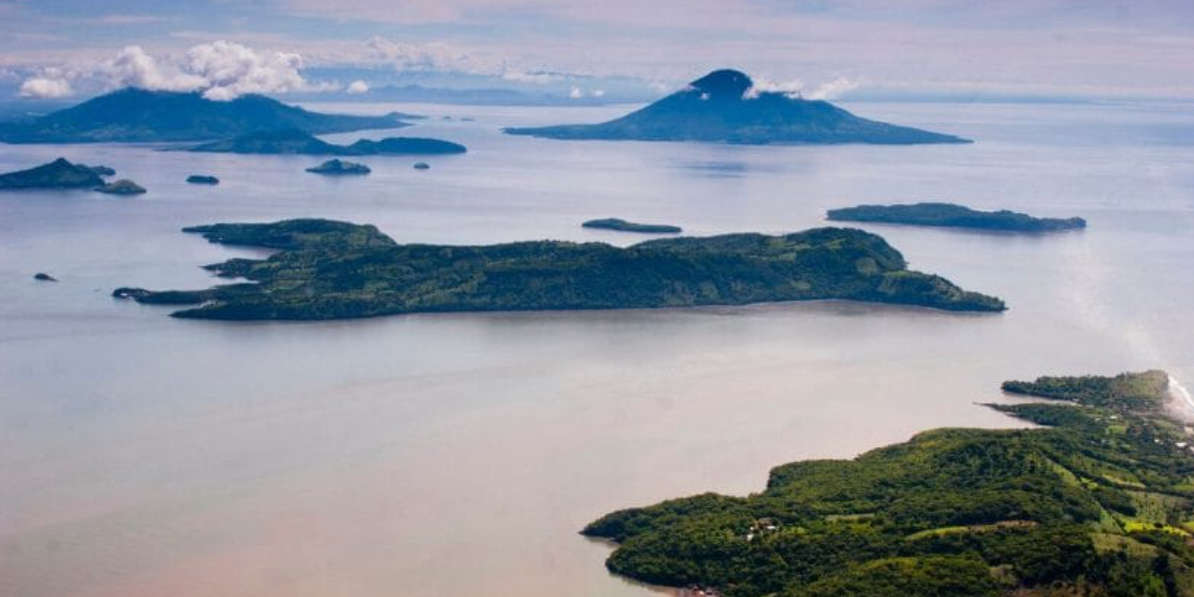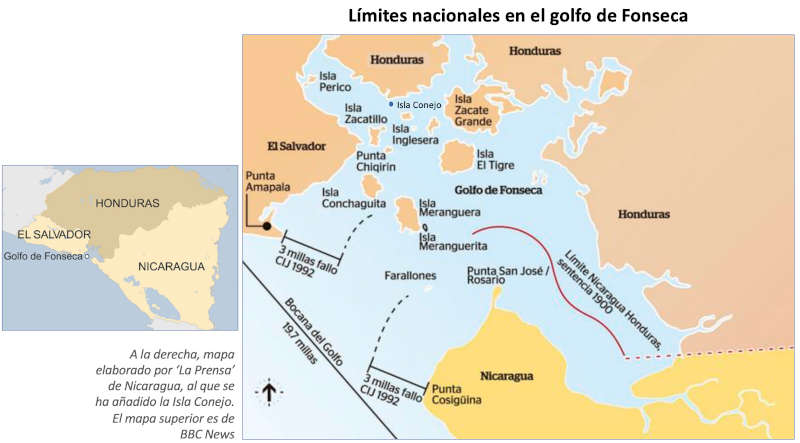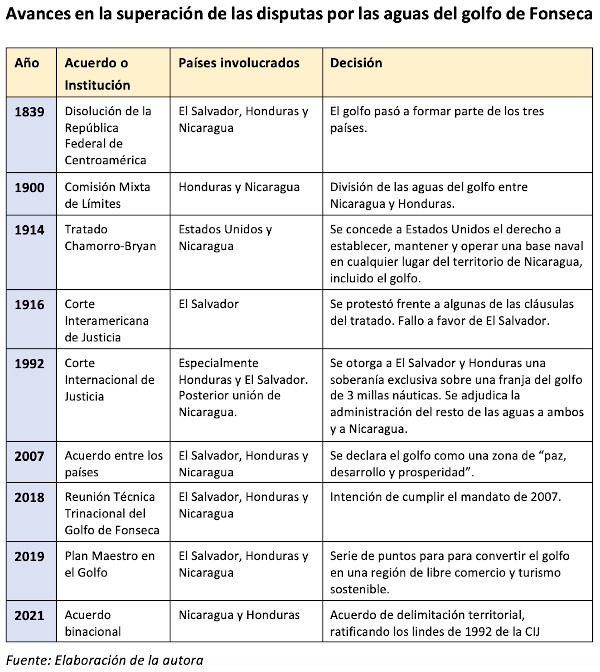Historical conflict
Since the emergence of the Central American republics, the gulf has been considered a geostrategic area for the countries that comprise it and has constituted a source of disputes and territorial tensions between them. It is Honduras' only outlet to the Pacific, and although the specific weight of this country is oriented more towards the Atlantic (much of the economic activity is centered in the Sula valley and foreign trade is conducted mainly through Puerto Cortes, in the northwest corner of Honduras), Tegucigalpa has a special strategic interest in enhancing its opening to the south. But the mouths of the gulf, formed by El Salvador's Amapala Point and Nicaragua's Cosiguina Point, give these other two countries the key to access. Honduras is guaranteed free passage through the central section of the mouth, in waters of co-sovereignty between the three neighbors, but in an open conflict status El Salvador and Nicaragua could illegitimately block the circulation.
The land boundary between Honduras and Nicaragua was established jointly agreement by a Joint Boundary Commission in 1900. However, the traditional dispute lies in the delimitation of waters. In August 1914, the Chamorro-Bryan Treaty was signed, a agreement between the United States and Nicaragua, granting the latter for 99 years the right to the North American country to build an inter-oceanic canal, as well as to establish, maintain and operate a naval base anywhere in Nicaraguan territory, including the Gulf of Fonseca. However, in 1916, El Salvador appealed to the Central American Court of Justice, arguing that some of the clauses of the treaty violated its rights, requesting that the sovereignty of the gulf be maintained as it was before. Finally, the Court ruled in favor of El Salvador, even though Nicaragua opposed the decision, denying the Court's jurisdiction.
On the other hand, since 1969 an atmosphere of tension was generated between El Salvador and Honduras due to border disputes, in a dispute later joined by Nicaragua. The International Court of Justice (ICJ) ruled final in 1992, granting El Salvador and Honduras exclusive sovereignty over a 3 nautical mile strip of the gulf from its coast, awarding the administration of the rest of the waters to both countries and Nicaragua. Of the main islands, that of El Tigre was confirmed for Honduras, while the Meranguera and Meranguerita islands, on the route in and out of the gulf, were ratified as belonging to El Salvador. However, disputes have persisted, mainly due to the dispute between Honduras and El Salvador over other islands.
In 2007, the three countries declared the gulf as a place of "peace, development and prosperity". In that framework, in 2018 they held a "meeting Trinational Technical of the Gulf of Fonseca", aimed at turning the gulf into a zone of cooperation between the three neighbors. However, the purpose to consolidate a peaceful agreement between the countries did not end up materializing.
In 2019, the three states agreed to adopt a Master Plan for the gulf, with the financial aid financial arm of the Central American Bank for Economic Integration (CABEI). The plan revolved around trinational economic development and investment projects, several of them aimed at turning the gulf into a region of free trade and sustainable tourism.



